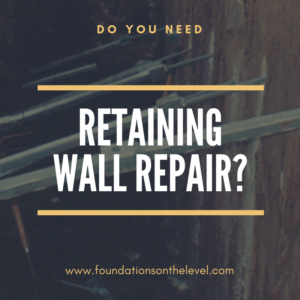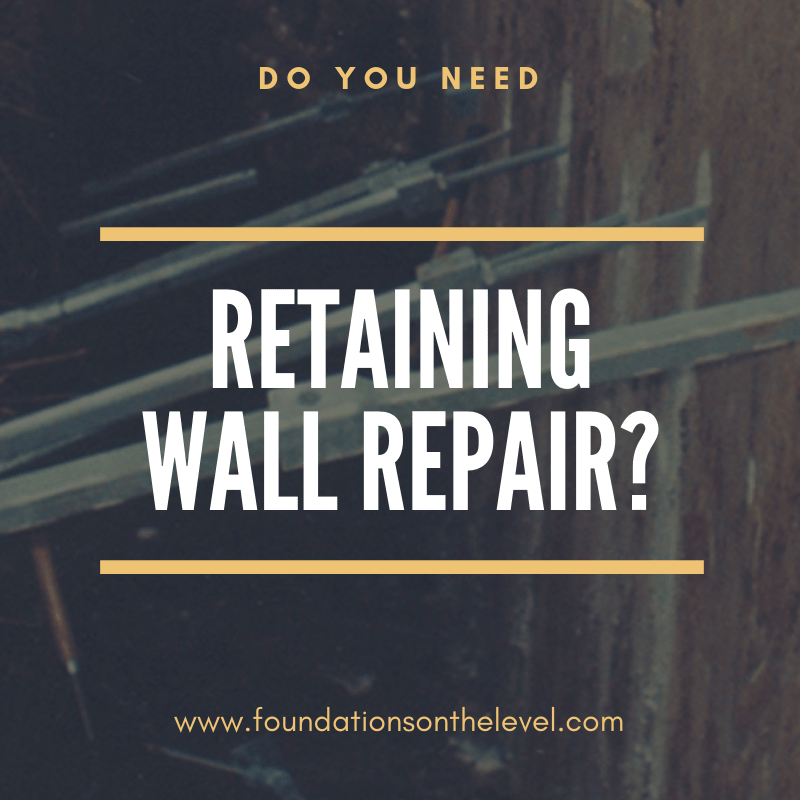
Homes and businesses on the West Coast often have retaining walls to keep sandy soil in place and protect it from problems like coastal erosion. But retaining walls can wear down over time, leading to retaining wall failure.
Is your retaining wall in disrepair? If so, it could lead to major erosion problems that eat away at your foundation or the soil around it. This can cause structural issues, cracks, and water problems.
How to Tell if Your Retaining Wall Needs Repairs
1. Wall Has Begun Leaning or Tilting
If the wall has started to tilt or buckle, or if a part of the wall is showing these signs, these could be signs that the wall is no longer able to support the load that the soil is placing on it. Voids behind the wall also could be creating instability.
2. Cracks in Wall
Similar to wall cracks in a home, not all cracks in retaining walls mean the same thing. Most can be broken up into two categories:
- Horizontal cracks: These cracks usually occur when the pressure on the wall from the soil behind it becomes too much for the wall to support. The cracks are often accompanied by a bowing in the wall at the crack point.
- Vertical or Stair-Step Cracks: These cracks can be caused when, via erosion or other issues, a portion of the wall begins to settle into the ground. This placed the concrete or masonry elements under stress, eventually causing them to crack.
3. Bulging or Bowing
If you notice that either sections or the entirety of your retaining wall bulging or bowing it means that either something has weakened within the wall itself or the pressure being applied by the soil behind it has gotten to be too much for the retaining wall.
4. Drainage Not Working
Whether your wall has weep holes or some other drainage method, if you notice that nothing is draining after a rain or that water is accumulating behind your wall, this is a sign that your retaining wall is under stress. The more water accumulates, the more hydrostatic pressure it applies on the retaining wall. Eventually this could lead to retaining wall failure.
5. Erosion at the Top of the Wall or Beneath Its Base
Erosion behind a retaining wall can change the soil load it is supporting. If erosion occurs at its base, portions of the wall might settle, causing cracking and weakening of the wall.
6. Movement of Wall Sections or Capstones
If the wall or portions of it begin to shift, including pulling away from a structure that was on one end of it, that is a sign that either the pressure in the soil has increased to beyond what the retaining wall was designed to hold or that there are structural issues with the retaining wall itself.

What to Do if You Need Retaining Wall Repair
You might see other signs of failure that could indicate your retaining wall needs to be stabilized as well – crumbling, rotting wood on or near the wall, or sloped and uneven surfaces nearby (patios, driveways, decks, etc.).
If you do need retaining wall repair in the Orange County or San Diego County area, call Foundations on the Level right away. We utilize helical tiebacks from Earth Contact Products (ECP), to straighten, level, and stabilize the retaining wall. We can fix leaning and bowing retaining walls, closing the cracks and stabilizing the wall.
Contact us today for a free retaining wall repair quote.

